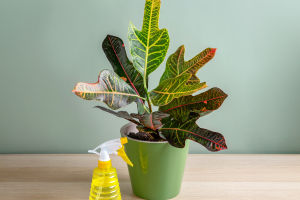In today's fast-paced world, stress and anxiety have become almost inevitable parts of daily life. With the constant pressures of work, social responsibilities, and personal challenges, many of us find ourselves overwhelmed.
In response, people are increasingly turning to nature-based therapies to restore balance and mental well-being.
One such approach that has gained popularity is flower therapy, which uses the beauty and fragrance of flowers to help alleviate emotional stress and enhance mood.
But how exactly do flowers work their magic? This article will explore the concept of floral therapy, how flowers can positively impact our emotional health, and ways we can incorporate this natural remedy into our daily lives.
The Science Behind Floral Therapy
Flower therapy, also known as floral healing, is rooted in the idea that nature, particularly flowers, has a profound effect on human emotions. The visual beauty of flowers, combined with their soothing scents, has been shown to reduce feelings of stress, anxiety, and even depression. The scientific community has explored the connection between flowers and mental health, with studies suggesting that exposure to flowers can elevate mood, improve cognitive function, and promote a sense of peace.
A key reason for this therapeutic effect is the way flowers engage our senses. When we look at flowers, we are drawn to their colors, shapes, and symmetry—elements that naturally provide visual pleasure and relaxation. Similarly, the scent of flowers stimulates the brain's limbic system, which is responsible for processing emotions and memories. Floral fragrances can trigger positive emotional responses, reduce anxiety, and even boost feelings of happiness.
The Role of Flowers in Stress Reduction
One of the main benefits of floral therapy is its ability to reduce stress. When we are exposed to flowers, our body responds by lowering levels of cortisol, the hormone associated with stress. Whether it's the sight of a blooming bouquet or the gentle fragrance of lavender, flowers can create an environment of calm and tranquility. This is why flowers are often found in wellness spaces like spas, hospitals, and therapy centers.
Additionally, interacting with flowers through activities like arranging them or simply tending to plants has been shown to have a meditative effect. The process of focusing on each individual stem and petal allows the mind to slow down and become present, reducing the mental clutter that contributes to stress.
Floral Aromatherapy: The Power of Scent
In addition to their visual appeal, the scent of flowers plays an important role in their therapeutic qualities. Floral aromatherapy is a popular practice that uses the natural oils from flowers to promote emotional and psychological well-being. Scents like rose, jasmine, and lavender are commonly used to create a peaceful environment and support emotional healing.
For example, the scent of lavender has been shown to reduce symptoms of anxiety, promote relaxation, and improve sleep quality. Jasmine is known for its uplifting properties, helping to combat feelings of sadness or melancholy. Rose, on the other hand, is often associated with love and self-compassion, making it ideal for soothing emotional distress and promoting positive emotional states.
Floral Art in Healing: Bringing Flowers into Your Life
Incorporating floral art into daily life is a simple yet effective way to harness the therapeutic benefits of flowers. Whether through floral arrangements, indoor plants, or DIY flower crafts, surrounding yourself with flowers can help promote a sense of calm and well-being.
Floral arrangements for your home or office can be designed with specific purposes in mind. For example, placing calming flowers like lavender and chamomile in your bedroom can improve sleep quality, while uplifting flowers like sunflowers and daisies can create a positive and energizing atmosphere in the living room. Additionally, flower arranging as a hobby can serve as a creative outlet for stress relief. The act of selecting, arranging, and caring for flowers allows individuals to express their emotions and reduce anxiety.
Floral Therapy in Mental Health Practices
Floral therapy is not only used in casual home settings but has also found its place in more formal mental health practices. Many therapists and wellness practitioners now incorporate flowers into their therapy sessions. For example, floral therapy workshops are being used to help people manage anxiety, trauma, and emotional blockages. These workshops often combine the therapeutic effects of flower arranging with guided mindfulness exercises.
Moreover, nature therapy, or ecotherapy, encourages patients to connect with nature, including flowers, as a means of healing. Research has shown that spending time with flowers and plants in a therapeutic setting can improve emotional well-being, enhance mood, and reduce symptoms of anxiety and depression.
Conclusion: Embracing the Healing Power of Flowers
In conclusion, flower therapy offers a natural and accessible way to improve emotional well-being, alleviate stress, and elevate mood. The combination of flowers' beauty, fragrance, and therapeutic effects creates an environment of peace and healing. Whether through visual exposure to flowers, the calming scents of floral oils, or engaging in the act of flower arranging, flowers offer a powerful tool to promote mental health.
So, why not embrace the healing power of flowers in your daily life? Whether it's a bouquet of fresh blooms on your desk or a floral-scented candle in your living room, incorporating flowers into your environment can make a significant difference in your overall well-being. Let the beauty and fragrance of flowers be your natural remedy for stress and anxiety—creating a serene, peaceful atmosphere wherever you go.


